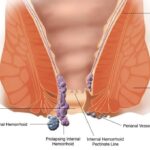6 Golden Tips on How to Unclog Milk Ducts
As an expectant mother, the topic of clogged milk ducts will likely come up occasionally. There is so much misinformation on the causes and how it affects parenting. As for nursing mothers, some know first-hand what it feels like to have clogged milk ducts.

This article covers clogged milk ducts: causes, management, and the difference between clogged ducts and mastitis. Without further ado, let’s dive in.
What are the Symptoms of Clogged Milk Ducts?
It is easy to know whether your milk ducts are clogged as long as you are breastfeeding. These are the four most common symptoms:
- A clogged milk duct makes the breast develop a small lump or several lumps where the duct
are located.
- Blocked or reduced milk flow is another symptom of clogged ducts in your breast(s). Your baby
will struggle to suckle the milk out of the breasts, and if they succeed, only a few drops will come out. Pumping the milk to feed the baby later also shows the same challenges.
- Your breasts will feel ticklish, tender, and, in worst-case scenarios, sore. Any time the baby or
breast pump latches on them; you let out a huge sigh due to discomfort.
- If the discomfort and pain go away after nursing the baby, it could mean you have unclogged milk ducts.
What Causes Milk Ducts to Clog?
Now that we have identified the main symptoms of clogged milk ducts let’s discuss the possible causes of this condition. There are also four possible reasons why your milk ducts could be clogged:
A. Poor Pumping or Feeding Patterns
Skipping feedings or pumping sessions makes the milk accumulate in the ducts. Although the milk might flow freely, some might get stuck in the ducts, causing them to clog. Similarly, taking too long to breastfeed or pump the milk makes them clog in the ducts.
Another reason why your milk ducts are clogged is if you prefer to feed the baby on one breast. The breast, which the baby suckles less, clogs.
B. Wearing Extra Tight Clothes
Wearing extra-tight clothes such as bras might force the milk ducts to clog, reducing the milk flow significantly.
C. Milk Oversupply and Poor Latch
Some women have an oversupply of milk. The milk keeps flowing no matter how much the baby suckles or you pump. Although adequate milk supply is healthy for a baby, it might lead to blocked ducts, inconveniencing the mother.
Similarly, if the baby has a poor or weak latch, they are likely to struggle to drain the ducts of the milk, making them clog.
D. Changing Baby’s Feeding Schedule
Any time you adjust the baby’s feeding program, it takes time for the body to adjust. Adjusting the baby’s feeding habits, such as introducing them to solid foods or stopping them from breastfeeding, leaves your milk ducts with excess supply. As the milk flows, some get stuck in the ducts, leading to clogging.
How Should You Unclog Clogged Milk Ducts?
The discomfort that comes with clogged milk ducts is not something to write home about. Not only does it irritate and cause excruciating pain, but it also leaves you mentally drained. Worse still, failure to unclog the ducts might lead to serious health issues, including infections.
You can avoid all those inconveniences by following these tips on how to unclog milk ducts:
1. Massaging the Breasts
Constant massaging of clogged milk ducts is an ideal way to unclog them. You can massage the ducts by applying gentle pressure on them when breastfeeding. The best way to massage clogged ducts is to create a circular motion outside the nipples and slightly to the lumpy area.
2. Regular Pumping
Mothers with an excess milk supply are more likely to have their ducts clogged than those with a relatively lower supply. The excess milk supply makes it hard for the baby to drain the ducts thoroughly. If you are going through this challenge, pump the excess milk to relieve the ducts off the excess milk.
3. Regular Nursing
If only one breast is clogged, give it to the baby first. Let the baby suckle it until the ducts are unclogged, and they drain it thoroughly. This strategy is uncomfortable and can cause you to initially cringe in pain. However, the pain will go away and you will have unlocked another tip on how to unclog milk ducts.
4. Getting the Right Position
Certain sitting, standing, or sleeping positions allow milk to flow freely from the breasts. Standing on all fours is the perfect spot since it allows milk to flow through the force of gravity. However, this spot can cause choking, so get in this position cautiously.
5. Applying Some
You can apply heat to the breasts to make the milk ducts wider and the milk flow better. Dip a piece of cloth in warm water and gently press it on the breasts. Alternatively, you can stand under a stream of a warm shower while massaging the breasts.
6. Wearing Comfortable Clothes
Wearing comfortable clothes with less to no pressure on the breasts is another way to manage clogged ducts. When buying bras, choose the right size for the nursing ones. Avoid bras with an underwire since it might harm your tender breasts.
Frequently Asked Questions on Clogged Milk Ducts
The following are the frequently asked questions on clogged milk ducts:
Can my ducts clog if I am not breastfeeding?
Yes, your ducts can clog even if you are not breastfeeding. There are two conditions that can cause milk ducts to clog even if a woman is not breastfeeding:
- Periductal Mastitis
Periductal mastitis is a rare condition that affects reproductively active women. This condition is triggered by broken skin on the nipple, smoking, mammary fistulas, and bacterial infection.
- Mammary Duct Ectasia
This condition is predominant in women aged between 45 and 55 years.
It is characterized by pain and tenderness in the nipples and a sticky and thick discharge. Mammary duct ectasis occurs when the milk ducts widen, allowing fluid to fill up in them for a long time.
What are the complications of clogged milk ducts?
The following are the most common complications linked to clogged milk ducts:
- Severe pain in the breasts while breastfeeding or pumping milk.
- Body aches and chills.
- Redness and swelling of the breast, especially the nipples.
- Fever.
Should I breastfeed if I have clogged milk ducts?
Yes. It is recommended to breastfeed if your milk ducts are clogged. Doing so unclogs the ducts, relieves pain and discomfort, and protects you from infections.
How long does it take for clogged milk ducts to clear?
Clogged milk ducts take 24 to 48 hours to clear, especially if you follow the tips above. If you use the tips but the condition persists, you should seek medical help.
When should I see a doctor for clogged milk ducts?
You should see a doctor for clogged milk ducts if this happens:
- The milk ducts clog for over two days despite following the tips above.
- You experience excruciating pain and fever.
- The breast becomes extremely swollen.
Once the medic has performed extensive diagnosis and tests, they can prescribe antibiotics or extensive care.
What is the difference between clogged milk ducts and mastitis?
This is the best way to tell the difference between clogged ducts and mastitis:
| Clogged Milk Ducts | Mastitis |
| Pain is confined to the area around the lump. | The entire breast is painful. |
| Only the area around the lump is red. | The entire breast is red. |
| Except for the lump, you are fine. | Flu-like symptoms like fatigue and fever thrive. |
Bottom Line
Clogged milk ducts are part of the parenting journey that makes mothers so attached to their babies. You can manage clogged ducts at home instead of spending much money in the hospital. The six tips above will help you wade through the challenge of blocked ducts like a pro. May your nursing journey be smooth and full of good memories.
P.S: You will find this article helpful while feeding your baby.



